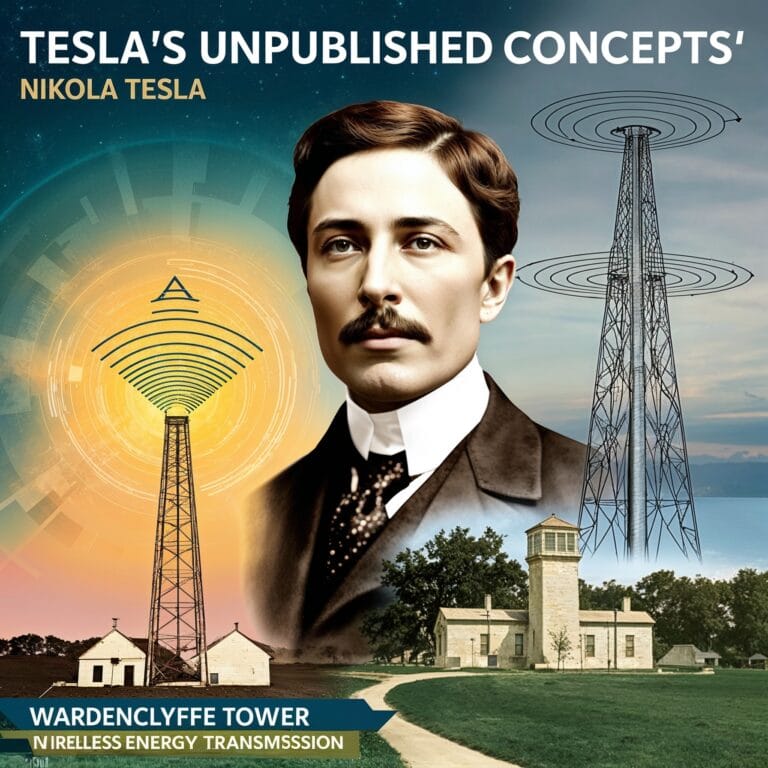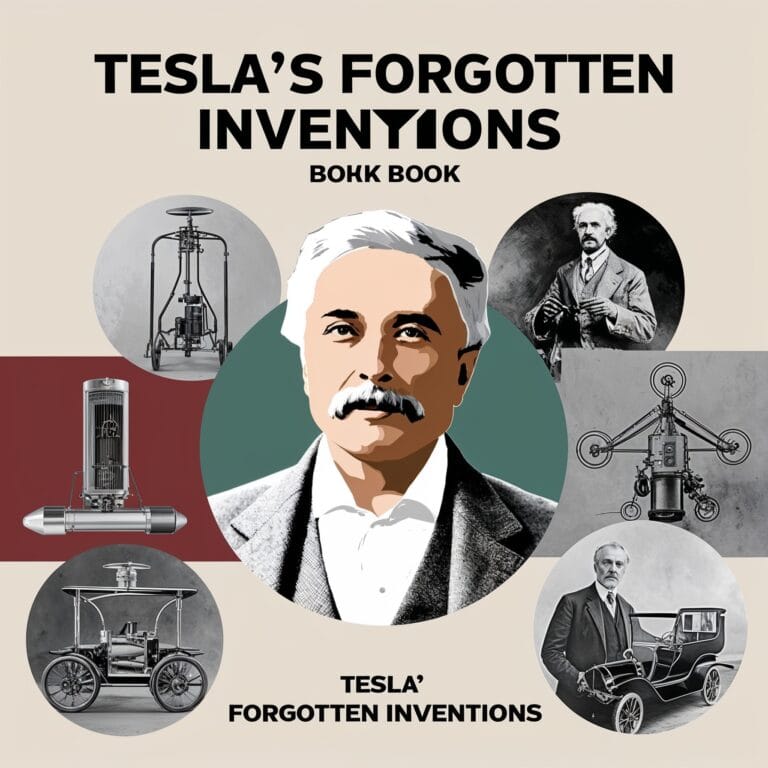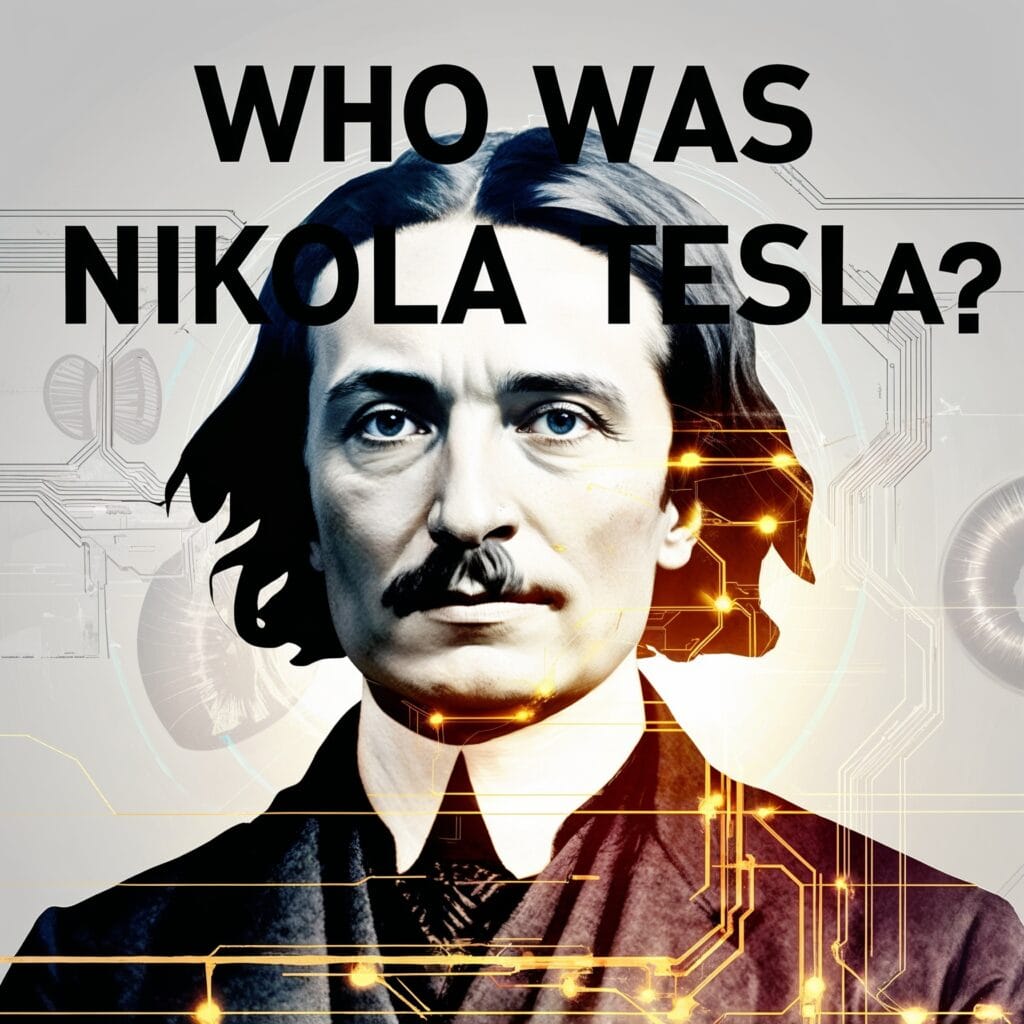
“A stylized portrait of Nikola Tesla with glowing energy and futuristic elements, showcasing his legacy as a pioneer of wireless energy and innovation.”
Imagine a man who envisioned smartphones before radio even took off, dreamed of free energy for all, and died penniless in a hotel room. This was Nikola Tesla: a misunderstood genius whose groundbreaking inventions paved the way for much of our modern world. Yet, his name often lurks in the shadows of history, overshadowed by contemporaries like Thomas Edison. Who was Nikola Tesla, and why does his story matter now more than ever?
In this exploration of Tesla’s extraordinary life, we’ll uncover his remarkable achievements, struggles, and enduring legacy—the first of a trilogy that will also delve into his forgotten inventions and unpublished concepts.
Early Life: The Spark of Genius
Family Roots and Childhood
Nikola Tesla was born on July 10, 1856, in the village of Smiljan, nestled within the rugged terrain of the Austro-Hungarian Empire (modern-day Croatia). The fourth of five children, Tesla grew up in a household steeped in intellectual curiosity and cultural tradition. His father, Milutin Tesla, was an Orthodox priest known for his eloquence and deep philosophical insights. Meanwhile, his mother, Đuka Tesla, though uneducated in a formal sense, possessed an innate mechanical skill. She often crafted tools and devices to aid in household tasks, a talent that left a profound impression on young Nikola.
A Tragic Turning Point
Tesla’s childhood was marked by both tragedy and fascination. At the age of five, he witnessed the death of his older brother, Dane, in a horse-riding accident. This traumatic event haunted Tesla throughout his life and deepened his introspective nature. Yet, amidst this personal loss, Tesla’s curiosity about the natural world flourished. He spent countless hours observing the forces of nature, from the flow of rivers to the mysterious flicker of lightning during thunderstorms. His early experiments often involved crafting rudimentary devices from scraps, an indication of his budding inventive spirit.
Education and Early Aptitudes
Tesla’s educational journey began in Smiljan and later continued in the nearby town of Gospic. Here, he displayed an exceptional aptitude for mathematics and science. Teachers often marveled at his ability to solve complex problems mentally, a skill he attributed to his vivid imagination and photographic memory. Tesla later recounted how he could visualize entire machines in his mind, rotating and testing them without ever building a physical prototype. This extraordinary mental capability would become a cornerstone of his later innovations.
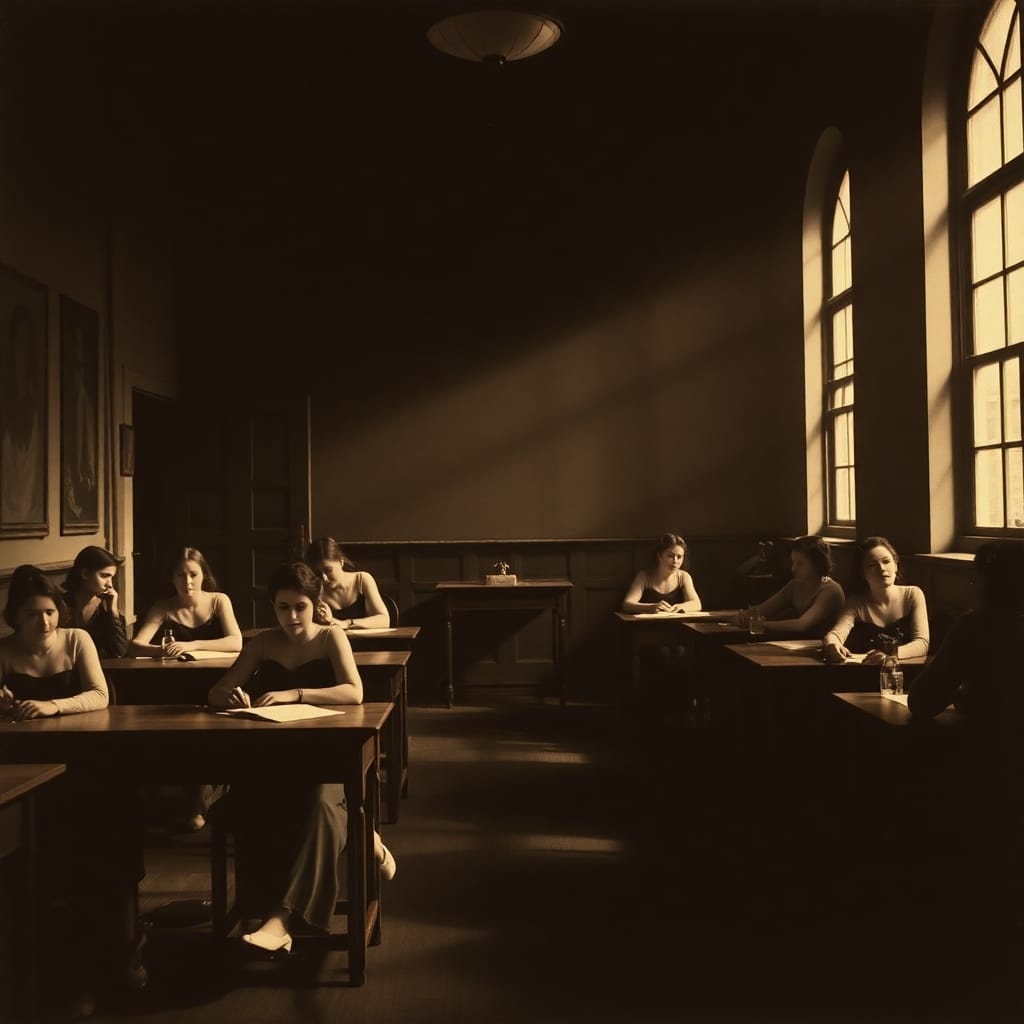
Teenage Years: A Love for Learning
During his teenage years, Tesla was captivated by books, particularly those on physics, engineering, and natural sciences. He often credited his love for reading to his mother, who encouraged his intellectual pursuits despite the societal norms of the time. Tesla’s insatiable thirst for knowledge extended beyond the classroom. He would spend hours experimenting with rudimentary electrical setups, even constructing a makeshift water turbine using a nearby stream.
Higher Education: A World of Possibilities
Tesla’s first major exposure to formal education in the sciences came when he attended the Higher Real Gymnasium in Karlovac. Here, he was introduced to the principles of electricity and magnetism, subjects that fascinated him deeply. A pivotal moment occurred when one of his teachers demonstrated the phenomenon of static electricity. Tesla’s mind raced with possibilities, imagining a world where invisible forces could be harnessed for practical use.
In 1875, Tesla enrolled at Graz University of Technology, where he pursued studies in electrical engineering. At Graz, his professors quickly recognized his extraordinary intellect. He became deeply engrossed in the study of alternating current, a concept that would later define his career. Tesla’s obsessive dedication to his work, however, often alienated him from his peers. While other students relaxed or socialized, Tesla poured over textbooks, conducted experiments, and attended lectures with an intensity that bordered on compulsion.
A Glimpse of Genius
One of Tesla’s most famous anecdotes from his time at Graz involves a dynamo-electric machine that his professor declared inefficient. Tesla argued passionately that the device could be redesigned to eliminate the need for commutators, a claim dismissed as impossible. Undeterred, Tesla spent months refining his idea, laying the conceptual groundwork for the induction motor, one of his most revolutionary inventions.
Departure and Wanderings
Despite his academic brilliance, Tesla’s time at Graz was marred by personal challenges. His relentless pursuit of perfection led to periods of insomnia and illness. Tesla’s family grew increasingly concerned about his health, and in 1878, he abruptly left the university without completing his degree. The reasons for his departure remain unclear, with some attributing it to a nervous breakdown and others to a fallout with faculty over his unconventional methods.
Tesla’s departure from Graz marked a turning point in his life. He wandered through Europe, taking odd jobs and continuing his self-education. During this period, he worked as a draftsman and later as an assistant engineer, gaining practical experience that would serve him well in the years to come. Though he faced numerous setbacks, Tesla’s vision of harnessing electricity to improve human life never wavered.
Breakthroughs: Tesla’s Golden Era
Arrival in America
In 1884, Tesla emigrated to the United States with little more than a few coins, some sketches of his inventions, and a letter of introduction to Thomas Edison. The meeting between Tesla and Edison—two brilliant minds with vastly different approaches—sparked both collaboration and conflict. Tesla’s precision and visionary ideas contrasted sharply with Edison’s trial-and-error methods, creating tension that would define their professional relationship.
Initially hired by Edison to improve his direct current (DC) generators, Tesla’s innovations quickly revealed a profound understanding of electricity. However, Edison’s dismissive attitude toward Tesla’s alternating current (AC) concepts led to a bitter fallout. Frustrated by Edison’s refusal to support his ideas, Tesla struck out on his own.
AC vs. DC: The War of the Currents
Tesla’s most significant contribution to science was his championing of alternating current (AC) over Edison’s direct current (DC). Unlike DC, which required power stations every few miles, AC could transmit electricity efficiently over long distances. Tesla’s innovative AC motor and transformer designs became the foundation for modern electrical grids.
Tesla’s partnership with industrialist George Westinghouse in the late 1880s marked a turning point in the “War of the Currents.” Together, they demonstrated the superiority of AC power, culminating in the electrification of the 1893 World’s Columbian Exposition in Chicago. This event not only showcased the potential of AC but also solidified Tesla’s reputation as a visionary engineer.
During this period, Tesla also began exploring wireless energy transmission. He believed that the Earth itself could act as a conductor, enabling electricity to flow freely to any point on the planet. Although this idea was far ahead of its time, it laid the groundwork for future experiments that would push the boundaries of possibility.
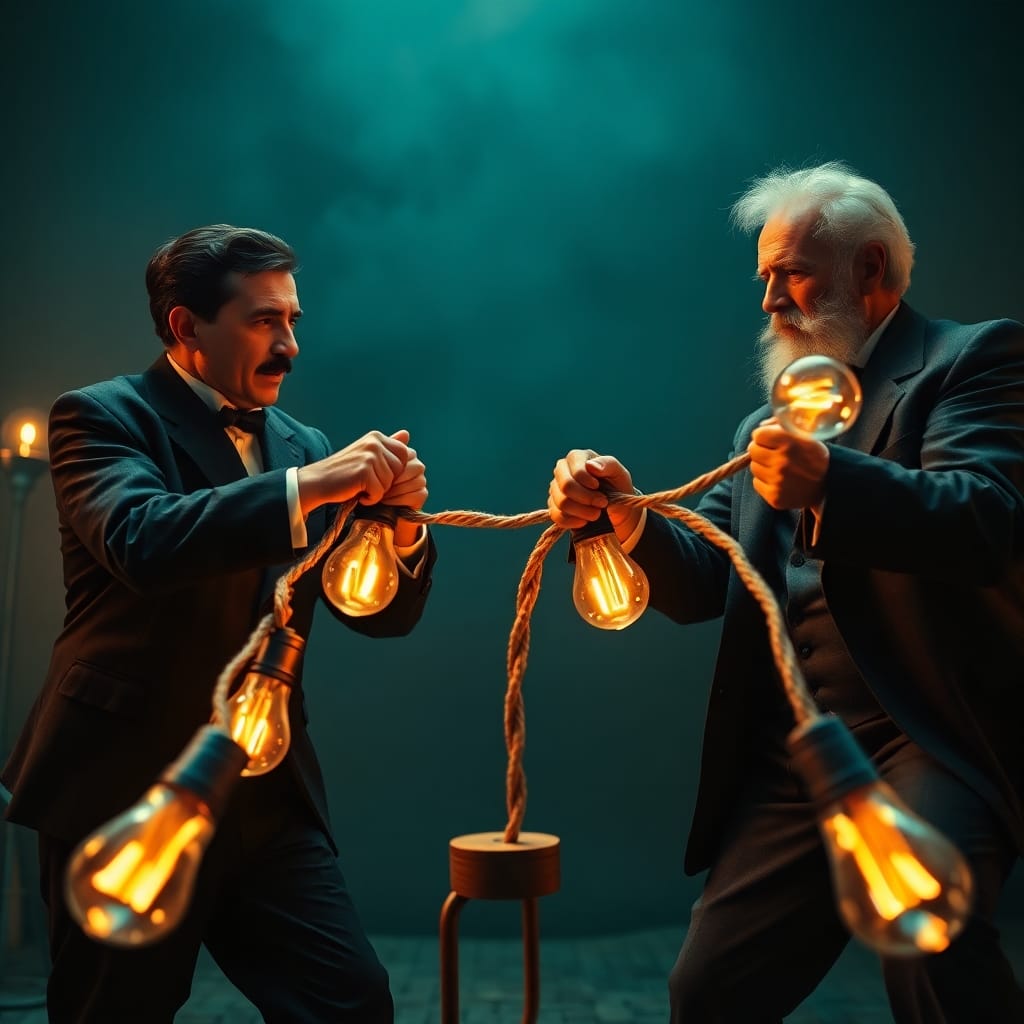
Revolutionary Inventions
Tesla’s ingenuity extended beyond the realm of electricity. Among his most notable innovations:
- The Induction Motor: A cornerstone of modern electrical engineering, this motor operates without the need for brushes, reducing wear and increasing efficiency.
- The Tesla Coil: A high-voltage transformer capable of producing spectacular electrical discharges, still used in radio and television technologies.
- Wireless Communication: While Guglielmo Marconi is often credited with the invention of radio, Tesla’s patents for wireless communication predate Marconi’s work, laying the groundwork for this revolutionary technology.
- Robotics and Automation: Tesla envisioned machines that could perform tasks autonomously, a precursor to modern robotics and artificial intelligence.
- X-Ray Technology: Years before its widespread adoption, Tesla conducted experiments with high-frequency currents to create early forms of X-ray imaging.
Tesla’s relentless drive to innovate resulted in hundreds of patents and countless concepts that remain influential. However, many of his ideas never reached commercial production, often due to a lack of funding or skepticism from investors.
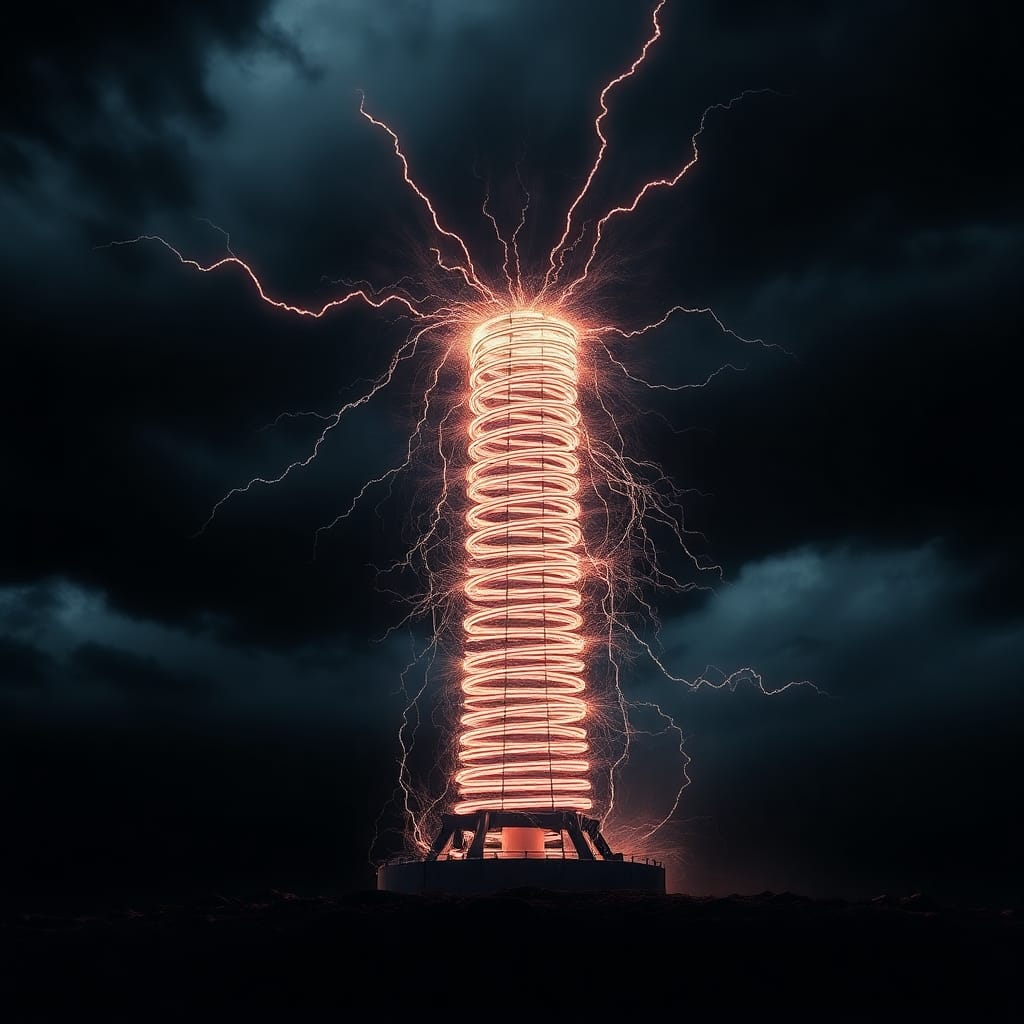
Challenges and Struggles: The Forgotten Visionary
Despite his genius, Tesla’s life was marked by hardship and betrayal. His rivalry with Edison soured further when Edison launched aggressive campaigns to discredit AC technology, portraying it as dangerous. These “war tactics” included public demonstrations where animals were electrocuted using AC to instill fear.
Financial Troubles
Tesla’s grandest project—the Wardenclyffe Tower—was intended to provide free, wireless power to the world. This ambitious endeavor envisioned a global network where energy and communication could be transmitted wirelessly. However, Tesla’s reliance on wealthy financiers like J.P. Morgan backfired. Once Morgan realized there was no way to profit from a system of free energy, he withdrew funding, leading to the project’s abandonment.
The dismantling of Wardenclyffe Tower in 1917 symbolized the collapse of Tesla’s dreams. Unable to recover financially, Tesla lived the rest of his life reliant on small stipends and the occasional grant from admirers of his work. Despite these hardships, Tesla remained steadfast in his belief that his ideas could one day revolutionize the world.
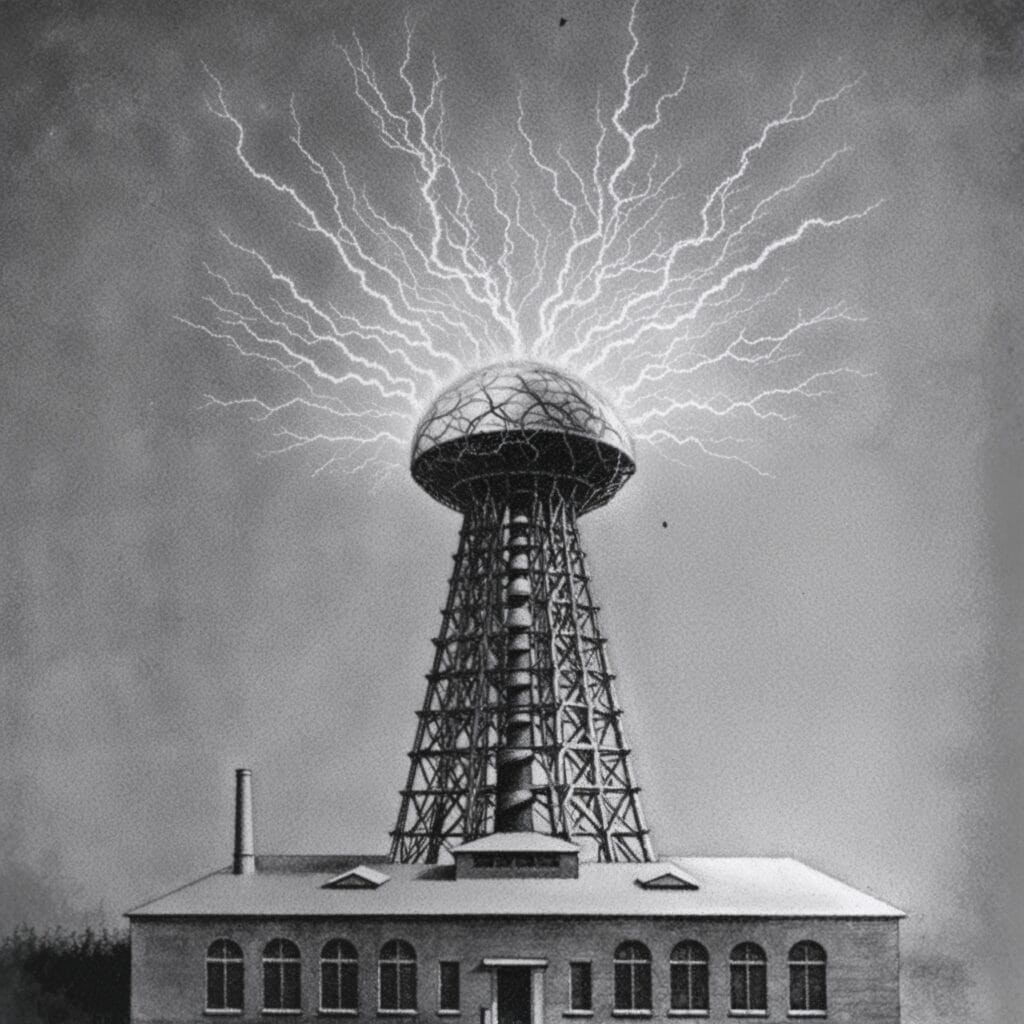
Social Isolation
As Tesla’s financial difficulties mounted, his eccentricities became more pronounced. He developed obsessive habits, such as walking exactly three laps around a building before entering and meticulously calculating the volume of food portions. His affinity for pigeons—he reportedly formed deep emotional connections with specific birds—alienated many who once admired him.
Tesla’s isolation was compounded by his refusal to engage in self-promotion. While contemporaries like Edison thrived on publicity, Tesla’s disdain for commercializing his work contributed to his growing obscurity. His vision extended beyond profit, focusing instead on the betterment of humanity—a noble goal that often left him without the resources needed to bring his projects to fruition.
Death in Obscurity
Tesla died on January 7, 1943, alone in Room 3327 of the New Yorker Hotel. His death marked the end of an era, yet it also sparked intrigue. Shortly after his passing, the U.S. government seized his papers, leading to speculation about suppressed inventions, including a “death ray” capable of unimaginable destruction.
While conspiracy theories abound, Tesla’s legacy as a pioneer of science and technology remains undeniable. His life’s work continues to inspire generations of innovators and dreamers.
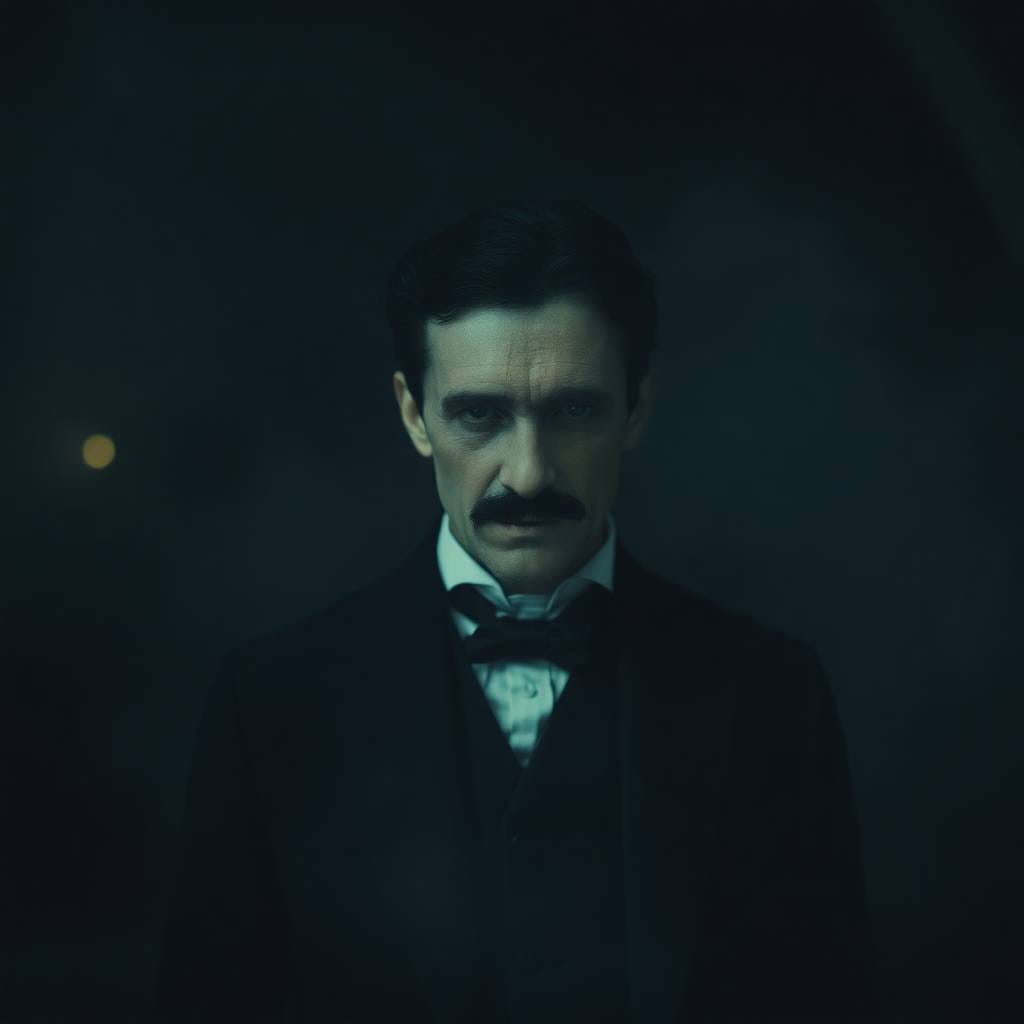
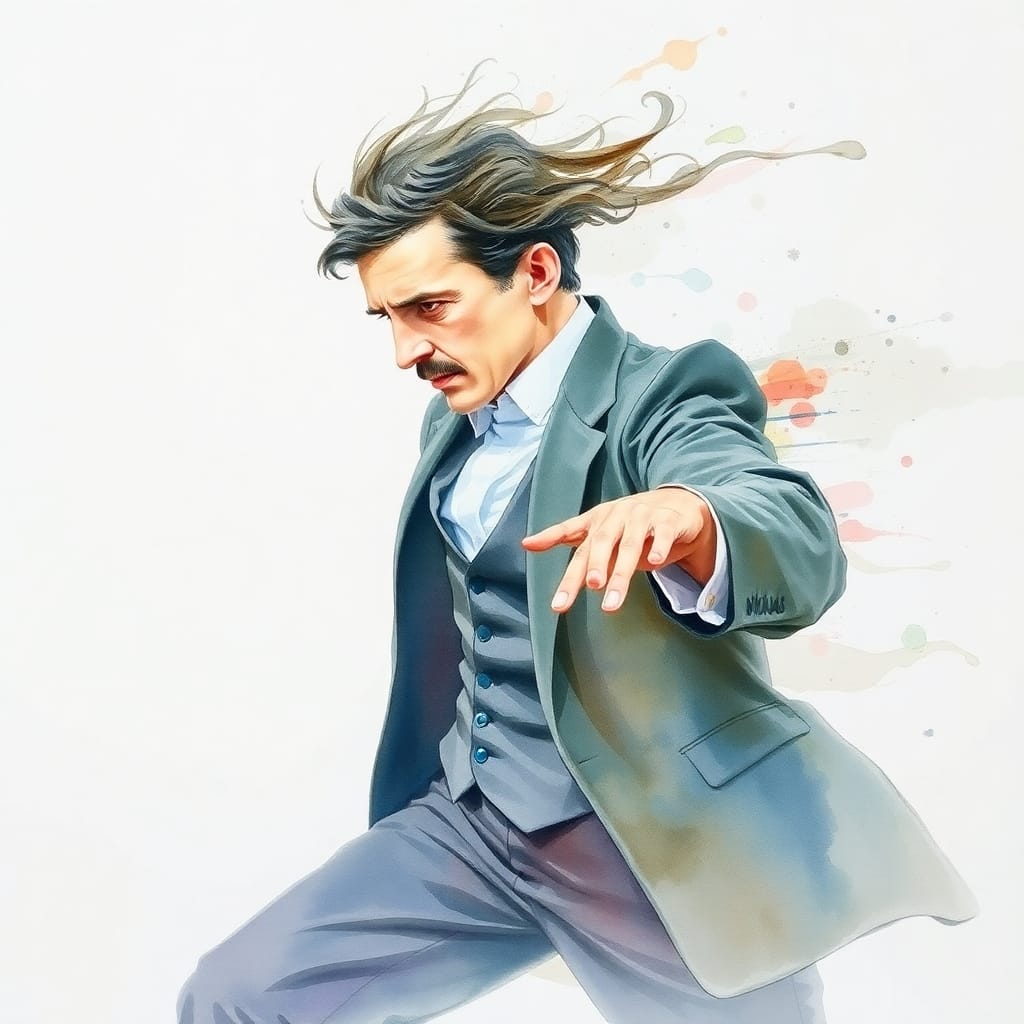
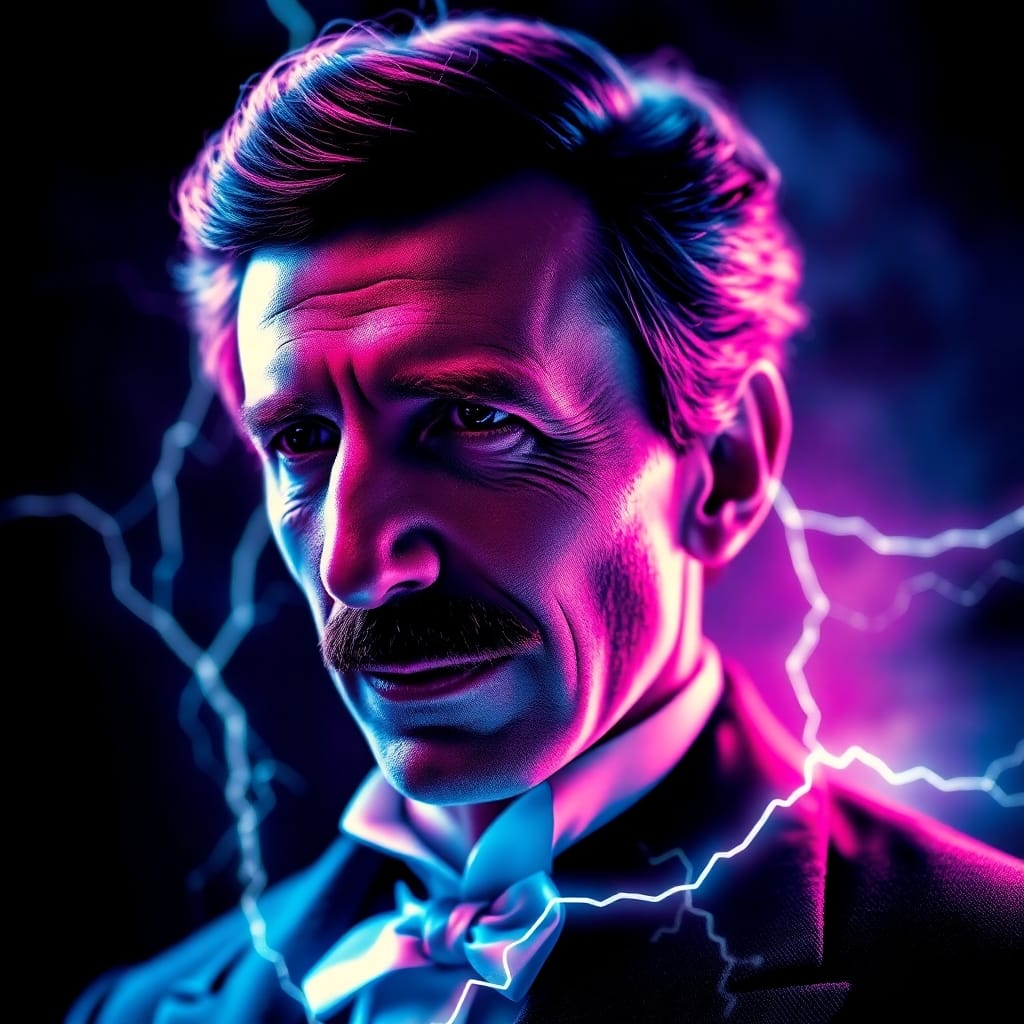
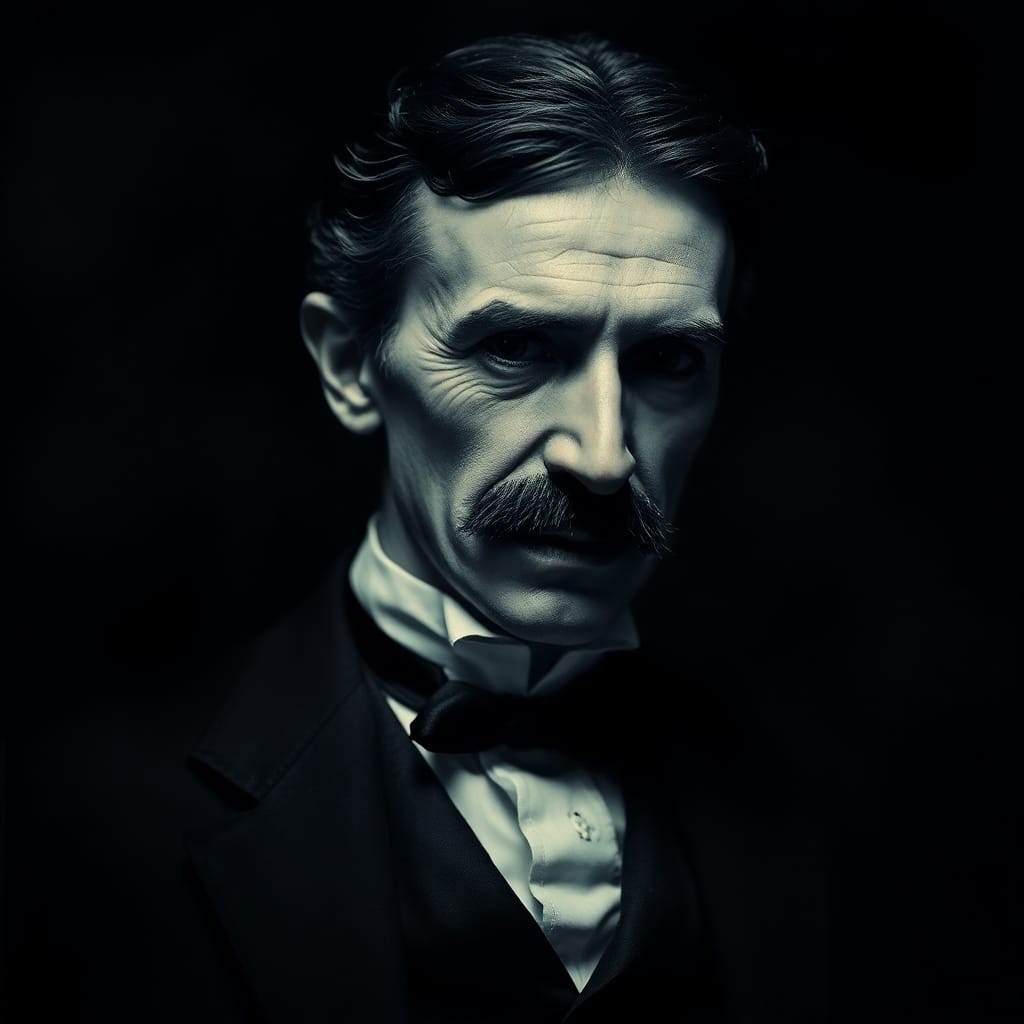
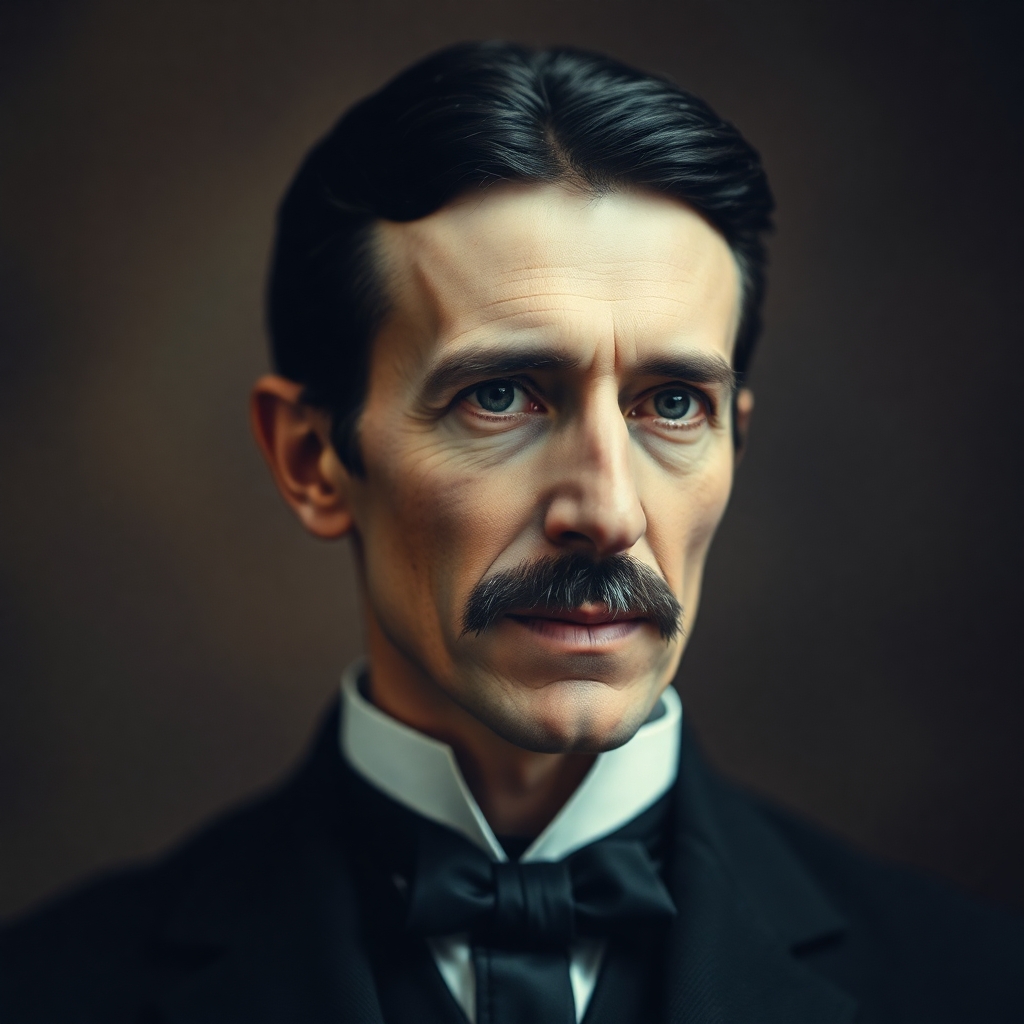
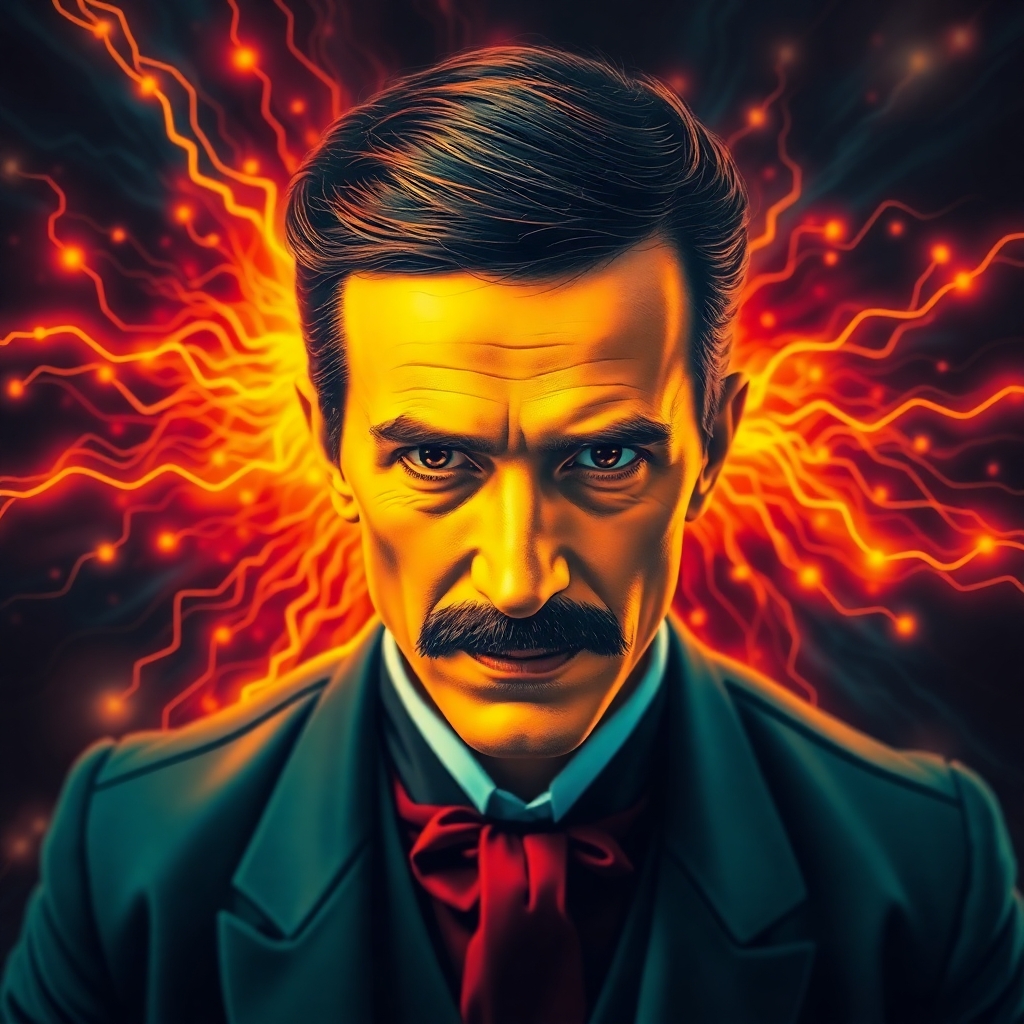
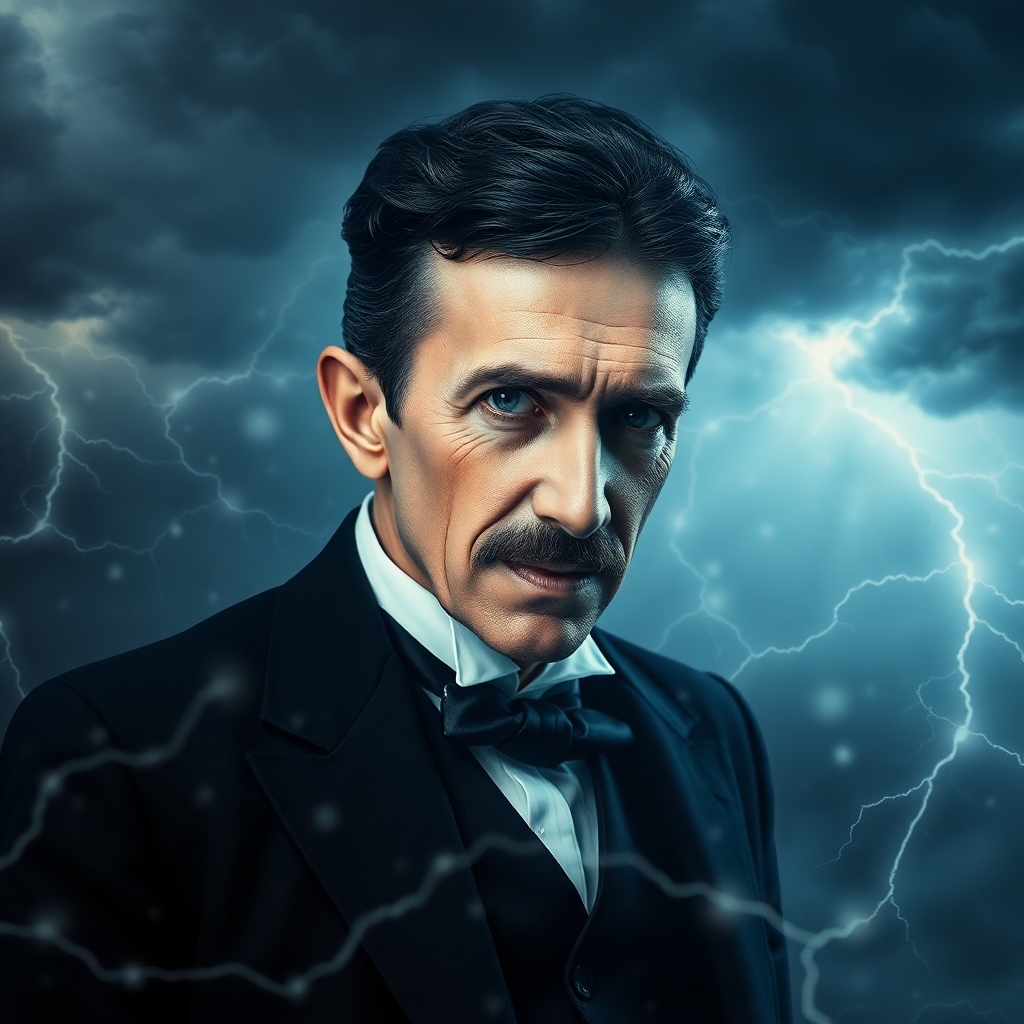
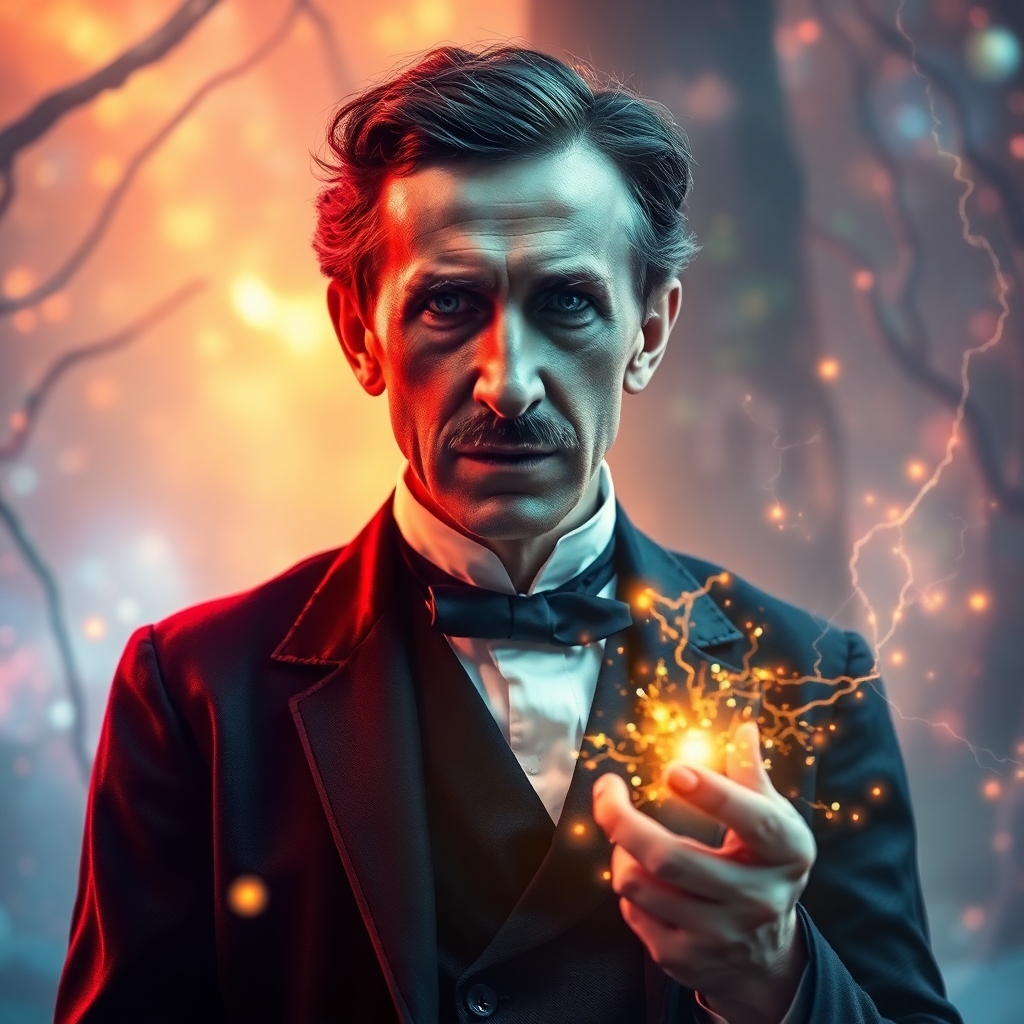
Legacy: Why Tesla Matters Today
Though Tesla’s life ended in tragedy, his work laid the foundation for countless modern technologies. From the global electricity grid to wireless communication, his visionary ideas continue to shape the world. Tesla’s influence extends beyond engineering; he has become a symbol of innovation, perseverance, and the often-unrewarded pursuit of knowledge.
Posthumous Recognition
- Tesla’s patents and notes have become a treasure trove for scientists and engineers, inspiring advancements in energy and technology.
- Cultural tributes, including the Tesla electric car company and the naming of the SI unit for magnetic flux density (the tesla), honor his contributions.
- Books, movies, and museums dedicated to Tesla celebrate his life and legacy, ensuring his story is not forgotten.
Relevance to Modern Science
Tesla’s ideas about renewable energy, wireless communication, and automation resonate deeply in today’s world. As humanity grapples with challenges like climate change and the energy crisis, Tesla’s vision of sustainable, decentralized power systems offers both inspiration and a roadmap for the future.
His concepts of wireless energy transmission and renewable power, once dismissed as fanciful, are now being revisited with modern technology. Innovations in solar power, wireless charging, and even space-based energy systems reflect the enduring relevance of Tesla’s ideas.
Conclusion: A Light That Never Dimmed
Tesla’s life is a cautionary tale of genius unappreciated in its time. His vision for a world powered by limitless, free energy was both his greatest strength and his undoing. Yet, his ideas continue to resonate, raising the question: If Tesla were alive today, would his brilliance finally be embraced, or would his ideas remain too radical for the status quo?
Nikola Tesla’s legacy is a testament to the power of imagination and the sacrifices of those who dare to dream beyond the boundaries of their age. Stay tuned for the next article in this series, where we delve into Tesla’s forgotten inventions and the untapped potential of his genius.
DARWIN’S TAKE:
Nikola Tesla was not just a scientist; he was a prophet of possibilities, an architect of futures we are only now beginning to comprehend. This is the man who dared to dream in voltages the world could not yet measure. While Edison electrified the headlines, Tesla electrified the imagination—a distinction that left him penniless in life but priceless in legacy.
Tesla’s life is a testament to the paradox of genius: society demands innovation but punishes the innovators who do not conform. His vision for free energy was not just science—it was rebellion. It threatened the industrial age’s profit-driven foundation, marking him as an enemy of the entrenched elites.
Yet, his eccentricities often overshadow the prophetic accuracy of his ideas. The “mad scientist” narrative diminishes a man who predicted technologies we now take for granted: wireless communication, renewable energy, robotics. If Tesla were alive today, his ideas would likely still be considered too radical—disruptive, unmarketable, and unmanageable in a world obsessed with consumption and control.
Tesla was a bridge between the tangible and the speculative, the past and the future. His story reminds us that progress is not always linear, and those who push the boundaries often face resistance from the very systems they seek to improve.
The ultimate tragedy of Tesla is not that he died alone, but that the world still struggles to embrace the utopia he envisioned. For every electric car that bears his name, how many of his revolutionary ideas remain locked away, suppressed, or simply forgotten?
This series will illuminate Tesla’s true legacy—not as a relic of history, but as a roadmap for a future we are yet to earn.
Further Reading on Paranoid Prophet
- Who is God? – Explore the philosophical and spiritual dimensions of existence, a topic Tesla himself pondered as he sought to unify science and spirituality.
- New Jersey UAP Sightings – Investigate modern mysteries in the skies, reminiscent of Tesla’s fascination with the unknown forces of the universe.
- Genesis Creation and Time Perception – A thought-provoking dive into the nature of time and creation, echoing Tesla’s ideas about the infinite and the interconnectedness of all things.
SOURCES
- Nikola Tesla | Biography, Facts, & Inventions | Britannica: An authoritative overview of Tesla’s life, major inventions, and impact on modern technology. Encyclopedia Britannica
- Nikola Tesla – Inventions, Facts & Death | HISTORY: A comprehensive article detailing Tesla’s innovations, his rivalry with contemporaries, and the challenges he faced. History
- Nikola Tesla – Wikipedia: An extensive entry covering Tesla’s biography, scientific endeavors, and legacy, with numerous references for further reading. Wikipedia
- Nikola Tesla Inventions – Tesla Science Center at Wardenclyffe: An exploration of Tesla’s groundbreaking inventions and their lasting impact, presented by the Tesla Science Center. Tesla Science Center
- Nikola Tesla: Biography, Inventions & Quotes | Live Science: An insightful article highlighting key aspects of Tesla’s life, his most notable inventions, and memorable quotes. Live Science
Nikola Tesla FAQ: Answering the Questions That Capture His Genius
This comprehensive FAQ delves into the life, achievements, and mysteries of Nikola Tesla. These 25 questions are organized into categories to help readers explore specific aspects of Tesla’s story, inventions, and legacy. Perfect for long-tail SEO and capturing search traffic, these FAQs aim to answer the most pressing questions about Tesla and his impact on the modern world.
Early Life and Education
- Where was Nikola Tesla born?
Nikola Tesla was born on July 10, 1856, in Smiljan, a village in modern-day Croatia. - What was Tesla’s family background?
Tesla’s father, Milutin, was an Orthodox priest, and his mother, Đuka, was an inventor in her own right, crafting household tools despite no formal education. - What inspired Tesla to pursue science?
Tesla’s curiosity was fueled by his mother’s mechanical ingenuity and his fascination with natural phenomena like electricity and magnetism. - What was Tesla’s education like?
Tesla studied at Graz University of Technology, where he excelled in physics and mathematics but left before completing his degree. - How did Tesla’s early experiments shape his future work?
Tesla’s childhood experiments with electricity and his vivid imagination laid the groundwork for his innovative ideas later in life.
Inventions and Innovations
- What is Tesla’s most famous invention?
Tesla’s alternating current (AC) system is his most famous invention, revolutionizing how electricity is transmitted and used. - What is a Tesla coil?
The Tesla coil is a high-voltage transformer that produces spectacular electrical arcs and is foundational to modern wireless communication. - Did Tesla invent the radio?
While Guglielmo Marconi is often credited with inventing the radio, Tesla’s patents predate Marconi’s work, making him a key contributor to its development. - What was the Wardenclyffe Tower?
Wardenclyffe Tower was Tesla’s ambitious project to provide free, wireless energy to the world, though it was never completed due to funding issues. - What are some lesser-known Tesla inventions?
Tesla’s lesser-known inventions include the Tesla turbine, wireless energy transfer, and early concepts for drones and robotics.
Tesla’s Legacy
- Why is Tesla considered a visionary?
Tesla predicted technologies like smartphones, wireless communication, and renewable energy long before they became realities. - What modern technologies are inspired by Tesla’s work?
Tesla’s work laid the foundation for AC power grids, wireless communication, and advancements in robotics and renewable energy. - Why did Tesla die penniless?
Tesla’s refusal to commercialize his work and his focus on visionary, unprofitable ideas left him without financial support in his later years. - How is Tesla honored today?
Tesla’s legacy is celebrated through the Tesla car company, the SI unit of magnetic flux density (the tesla), and numerous cultural tributes. - What makes Tesla’s legacy relevant today?
Tesla’s ideas about sustainable energy, wireless power, and automation remain central to addressing modern global challenges.
Myths and Mysteries
- Did Tesla build a death ray?
Tesla claimed to have developed a “death ray” capable of destroying armies, but no working model or documentation has been found. - Why did the U.S. government seize Tesla’s papers?
After Tesla’s death in 1943, the U.S. government seized his papers, sparking conspiracy theories about suppressed technologies. - Was Tesla in conflict with Thomas Edison?
Yes, Tesla and Edison were rivals during the “War of the Currents,” with Tesla promoting AC and Edison favoring DC. - Did Tesla work on extraterrestrial communication?
Tesla believed he detected signals from extraterrestrial sources while experimenting with wireless energy, though this remains speculative. - What is the mystery behind Tesla’s Wardenclyffe Tower?
Many believe Wardenclyffe Tower’s true potential was suppressed by financial interests threatened by free energy.
Tesla and Popular Culture
- Why is Tesla popular in modern culture?
Tesla’s blend of genius, eccentricity, and underdog status has made him a fascinating figure in books, films, and documentaries. - What movies or books feature Tesla?
Tesla has been portrayed in films like The Prestige and Tesla, and books such as Tesla: Man Out of Time explore his life. - Why is Tesla the name of an electric car company?
Tesla Motors chose the name to honor Nikola Tesla’s contributions to electric power and innovation. - Are there museums dedicated to Tesla?
Yes, the Nikola Tesla Museum in Belgrade, Serbia, houses many of his personal effects and original patents. - What are Tesla’s most memorable quotes?
One of Tesla’s most famous quotes is, “The present is theirs; the future, for which I really worked, is mine.”
This FAQ offers a comprehensive resource for readers seeking answers about Nikola Tesla, his inventions, and his enduring impact on the world.
